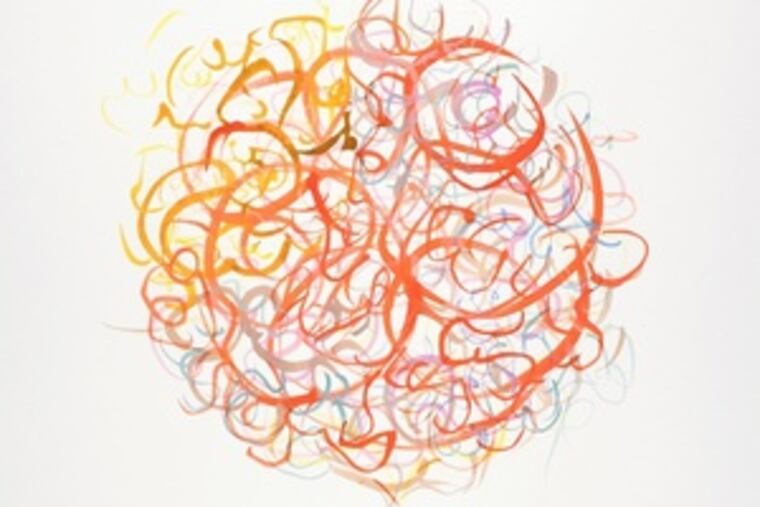You can try, but you can't resist this work
One artist is bold, the other more demure, but they both generate a feeling of well-being.

Periodically a dedicated art-watcher runs into a body of work that attracts the eye while it challenges the intellect to find something of substance in it. You like it at first sight, yet think you shouldn't because it seems insubstantial or just too simple.
That experience is on tap in two local exhibition spaces, the Arthur Ross Gallery at the University of Pennsylvania and at Gallery Joe in Old City.
The Ross is showing prints by Hitoshi Nakazato, who taught for four decades in Penn's School of Design and is retiring this year. At Gallery Joe, San Francisco artist Laurie Reid is showing a group of lively abstract watercolor drawings, small and large.
In each case, the images are colorful and ingratiating, and intensely concerned with the processes by which they were made. Nakazato's prints tend to be bold and assertive, to the point where they burst off the wall. Some hang like banners from the ceiling. They imbue the large, high-ceiling space with a ceremonial or celebratory feeling. They make one feel energized.
Reid's drawings are more demure, but they also generate an analogous feeling of well-being. Some are knots of pure gesture, while others are quieter and more geometric. The largest drawings, installed in a separate room, consist of joyful ranks and clusters of multicolored blobs, as if Reid had dripped her pigments onto the paper from a height.
Nakazato's images are primarily constructed from thick, straight and curved lines augmented by basic geometric shapes, circle, square or rectangle and triangle. One set of prints is more serendipitous; the artist sprinkled cuttings from a paper-shredder over an inked plate and ran it through the press. Anyone who has shredded paper can recognize immediately what he did.
With that insight, one grasps the key to Nakazato's art, deep engagement with process, in which experiment and the making seem to be at least as important as the result. In this show, he displays a mastery of all the traditional graphic methods plus a few of his own. These include "viscosity" color etchings, drypoint etchings, offset lithography, aquatints, monoprints and a process he calls sand serigraphy, which produces a sandpaper-like surface.
While there's considerable variety in Nakazato's work, the images themselves tend to be minimal, often no more than a few bold vectors across a contrasting ground. Seen individually, they might be dismissed as inconsequential. But presented en masse, they're not only delightfully sensuous, they prompt one to appreciate how much stimulation can be conveyed through minimal means.
The same can be said for Reid's drawings at Gallery Joe. If Nakazato's prints are gunshots, her works are tinkling bells. One series of clotted strokes evokes the grace and economy of calligraphy, and the potential of language to emerge from raw sound. Another series emphasizes architectural stability through connected triangles.
The four large drawings in her Lucky Streak series, with their Mason-Dot markings, are like fragmented rainbows. They are, at their core, a bit simplistic, but their musicality and joie de vivre are irresistible.
One senses, too, that conceptually they're not as amorphous as they appear, that they're structured in a way that communicates purpose and logic. I tried to resist, but in the end I surrendered to their charm and sunny optimism.